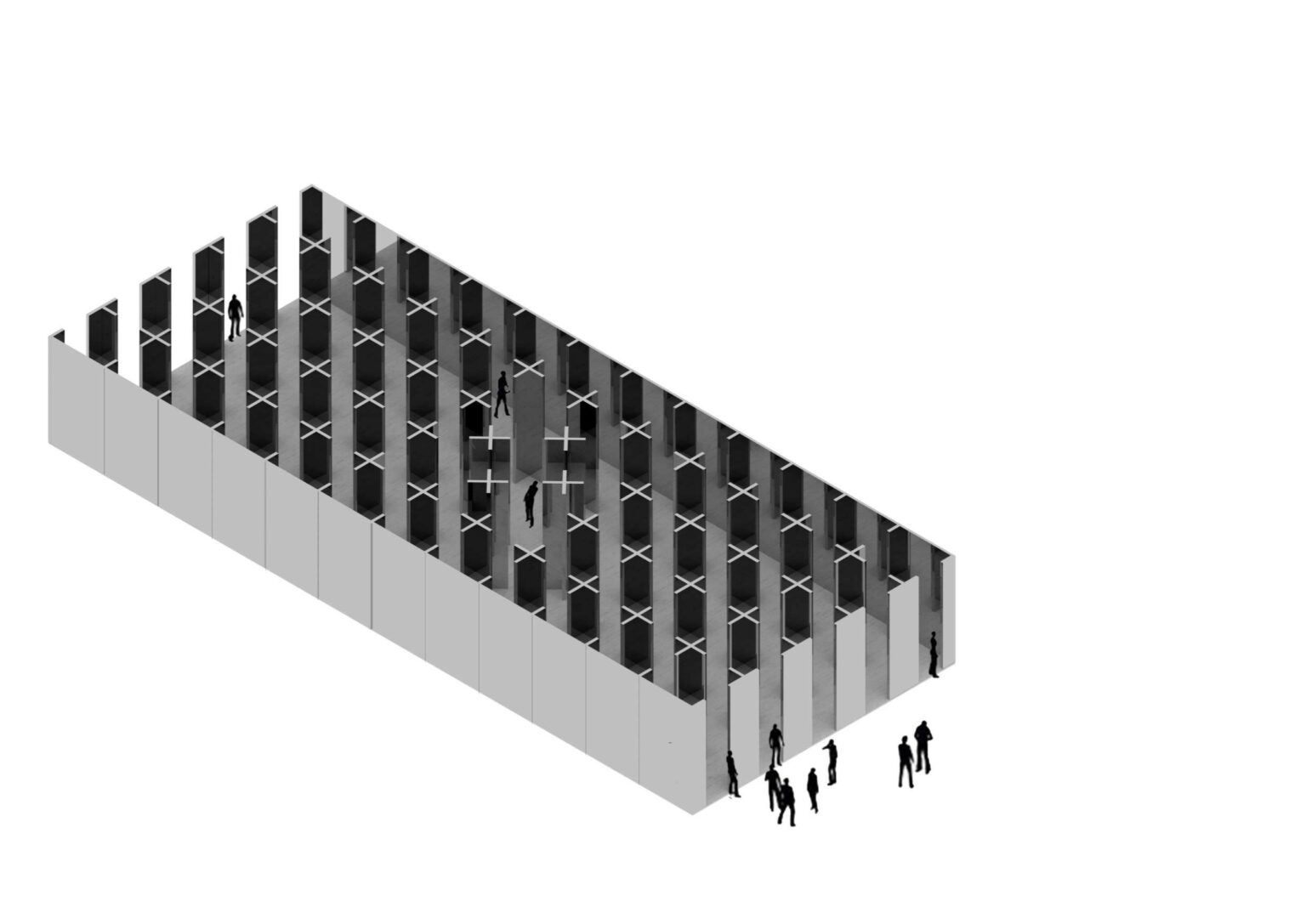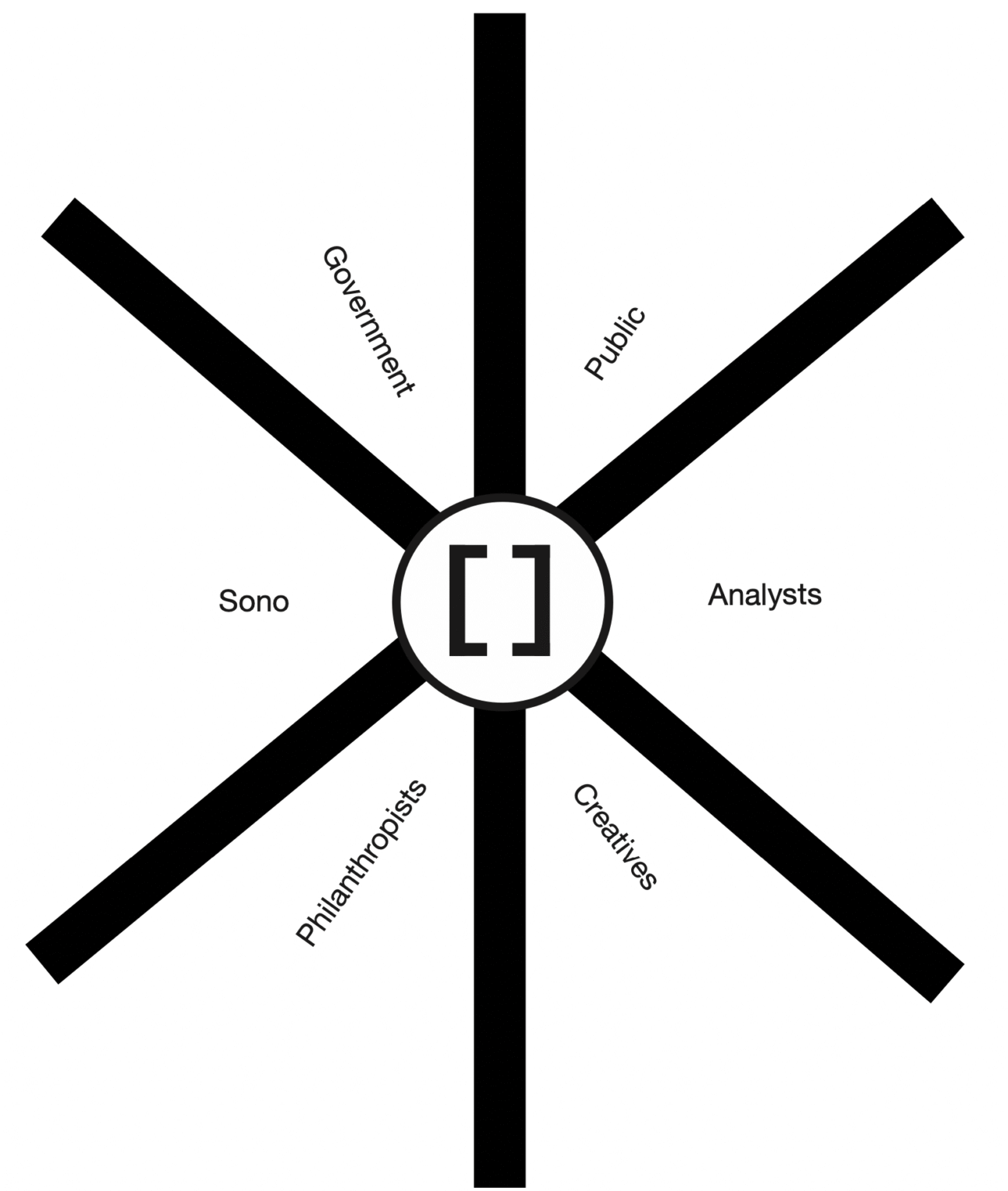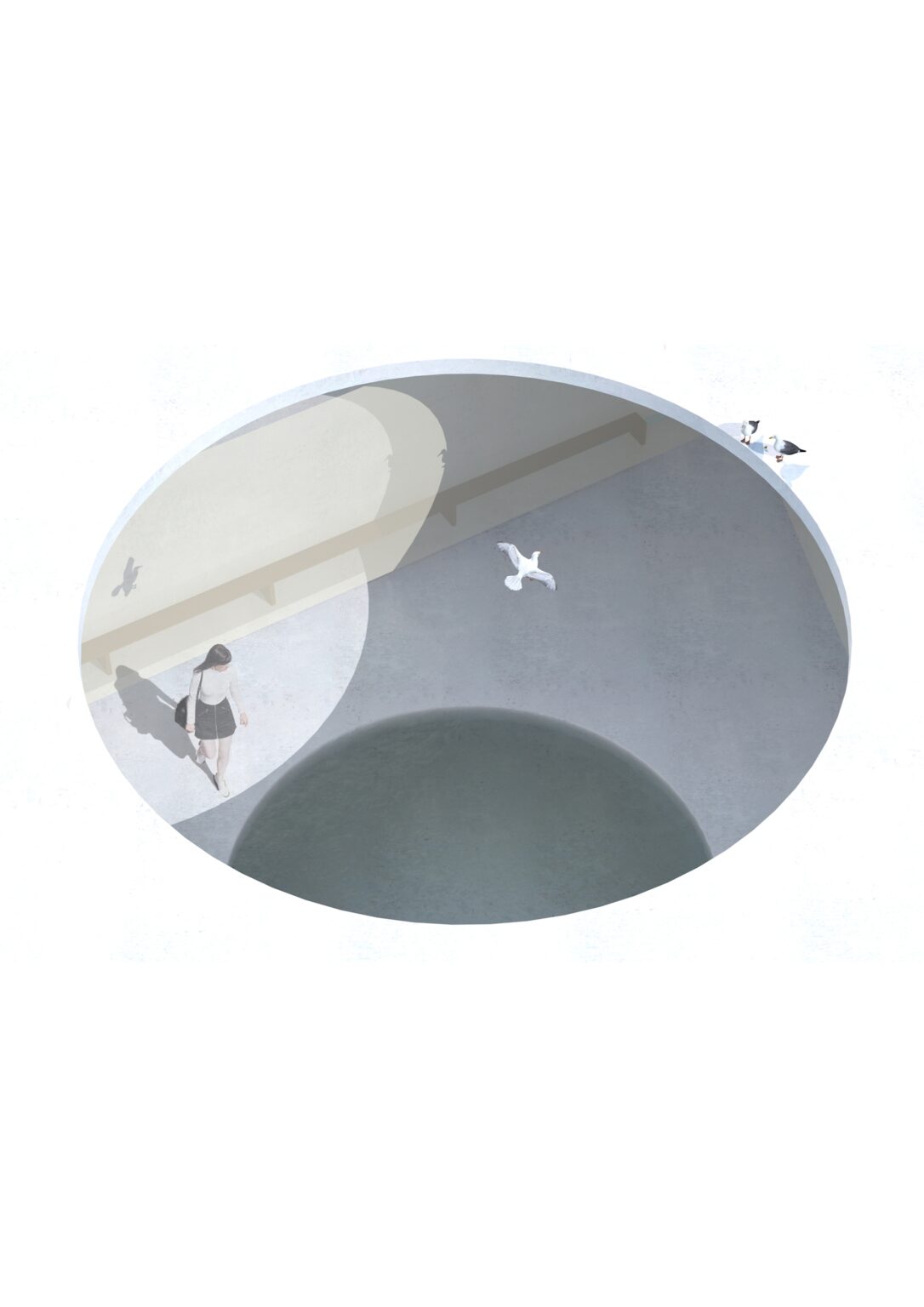Interior Design School of Design
Sophia Cavalluzzi

My interior design passions lie in storytelling through human anatomy, photography, and unconventional mnemonic tools. Nostalgia, sonderism and deeply profound discoveries of our human existence remain at the forefront of my ethos. I will always aim to propel authenticity into the spaces I manifest, while consciously evolving my personal design processes to stand in solidarity with the forever-changing industry and wider world. With this combined, my design outcomes become something far deeper than interior design, they become living organisms that continue to grow and flourish way beyond pen and paper or a digital screen.

The Search Engine
My final year project uncovered a topic that weighs heavily on the minds of people like myself who struggle with digital dependency and modern-world paranoia, particularly surrounding smartphones and AI. I aimed to discover humanity in its rawest state and propel this understanding into a digital detox facility for the benefit of the public.
Through developing an interior design proposal with an organic, human approach, I found that our physical bodies represent the most authentic aspect of our existence. This inspired me to incorporate human anatomy into all aspects of my project, from site analysis to the design of amenities within the facility.
Throughout the academic year, I concluded that addressing digitality is never a linear process. I confronted a technological paradox: struggling to disconnect from my own devices while designing a space meant for digital detox. I wanted my design process to align with the ethos of my proposal, but this proved genuinely challenging.
What remains is an amalgamation of ideas that resist the side effects of screentime and A.i, propelled through a series of installations and amenities within the Botanic Gardens Railway. ‘The Search Engine’ is an evolving digital detox facility that strives to confront the often underacknowledged challenges of the dark side of the digital age.
In the absence of the smartphone, who will we become?
Stakeholders
Sono – They are significant stakeholders as they are the
founders of the space.
The Public – The primary users of the facility. Without their
active engagement, the concept defeats its purpose.
Government – They recognise the positive impact of ‘digital
detoxing’ and would like to part-fund the facility to help
keep it alive for future generations. This year alone they had
discussions in parliament about banning mobile phones in
schools, and more recently they have began to acknowledge
the impact of ‘doom-scrolling’ – “New UK bill could force
social media firms to make content less addictive for
under 16s.”
Philanthropists – Sono will partner with charities such
as Papaya – a charity determined to support parents
and children going through smartphone addiction. The
active engagement with charities and carefully selected
corporations is another strategy to keep the space growing
and morphing into a better space.
Analysts – Universities across the whole of the UK have
been actively conducting research on smartphone addiction
The University of Glasgow recently conducted a study
in 2023 regarding smartphone use in young people and
‘risky’ behavioural changes. Armit Kaur Purba states
“Experimental and risk taking behaviours are an inherent
part of adolescence. However, as safeguards for a digital
world are still evolving, precaution across academic,
governmental, health and educational sectors may be
warranted before the risks of adolescents’ use of social
media is fully understood.”
Creatives – Many modern creatives are actively testing out
the connections between humans and technology, in many
different lights. The space may act as inspiration for many
creatives around the world.
Concept
Unlike traditional digital detox retreats (24-48 hours), the facility falls under the category of a public space, becoming an easily accessible staple within Glasgow for humans from all over the surrounding area to experience. The goal is to generate more facilities throughout the whole of the UK, with this Glasgow base being the experimental start of a mass operation to tackle digital dependency and detachment from our human bodies.
Users can undergo three main detox types:
-A Full Detox is for users who require deep soul searching. They will begin their digital detox at Kelvinbridge and embark on a 1km journey. For this setting, the user exploration of the site is guided. Staff members will provide amenity stop-off points to fit the needs of the user throughout the 1km stretch.
-The Everyday Detox is for the user groups who simply want to escape the parameters of the digital world within a more relaxed public space setting. At this entrance point, there is a crossover of Full Detox users and Everyday Detox users. The exploration of this particular section of The Search Engine becomes autonomous.
-The Profound Detox is set within the final 200m of the site, harvesting a synchronistic exploration of the Search Engine’s final tunnel and finally, the outdoor detox amenities the experience has to offer.
The facility has been broken down into four main anatomical parts: The Heart, The Pulmonary Artery, The Lungs and The Trachea.
Similar to a Google search engine, the search for detox is vast and forever evolving. The facility is designed to evolve in parallel with technological and societal developments, offering users eye-opening experiences that resonate with the complexities of our current digital landscape.
Site
Opened in 1896 and Situated in the West End of Glasgow, the Botanic Gardens Railway station lies deralict after its final line closure in 1964. Although used as the background in films and urban explorer Youtube videos, the site hasn’t been occupied since 1970 after a lit cigarette burnt the gardens station building to the ground. Proposals have came and gone over the years, including a proposal to turn the site into a nightclub, but nothing ever came to fruition.
The underground positioning of the proposed site allows Search Engine users to escape the chaos of their digitally infused infrastructures, facilitating a detox from the smartphone dominated world that exists above ground.
Site Programme
The Heart (Full Detox)
Exterior Landscaping, Reception / Consulatation, Sono the Collective Design Studio*
The Pulmonary Artery (Full Detox)
Exhibition, The Act of Waiting, Flutter, Liminal, We Are Real, I Promise
The Lungs (Everyday Detox)
Memory Palace, Alveoli Capillaries, Gut, Reception, Being Alive, Reminisce , Sacred Archive
The Trachea (Profound Detox)
Library, Wind Gust, Detox Garden
*The facility is run by an inconspicuous movement named Sono the Collective, whose design studio sits within the proposed site. They are active participants of the detox facility themselves, as even their studio has been designed to encourage less screen time.
The User Journey Begins
The solidity of The Heart brings structure to the Search Engine concept. Upon entering this space, the nervous system begins to calm, and the Full Detox process commences.

Facade

Consultation
The Pulmonary Artery
The Pulmonary Artery experience structure offers a digital detox designed to address concerns surrounding A.i and instant gratification.
Anatomically, The Limbic system is the key targeted bodily system within this section.
The Act of Waiting 25m
Flutter 230m
Liminal 100m
We are Real, I promise 100m
The Act of Waiting

Flutter

Liminal
“Liminal pushes the boundaries of the phrase ‘digital detox’, as the space has been created to resemble an oddly familiar memory. One that we all know, yet can’t quite place. This is the half way point of the tunnel, so essentially, Liminal acts as limbo. Neither heaven nor hell. Stress ball dispensers sit waiting at the end.”
We Are Real, I Promise



Alveoli Capillaries

Gut


Sacred Archive
The Trachea: A Final Embrace
Upon exiting the Lungs, users enter The Trachea, where they will be exhaled out of the space, eventually dispersing into the detox garden located at the top end of the Botanic Gardens.
The final 189m consists of a library that follows the bowed shape of the tunnel, and an installation called Wind Gust.
Wind Gust is a staff operated wagon on 109m narrow-gauge tracks, transporting users (two at a time) through the trachea at a gentle speed. Hidden wind machines blow a consistent set of overhead wind chimes as the wagon passes below, replicating the act of air travelling north of a human windpipe.
Predominantly, The Trachea’s secondary purpose is a fast track to the outdoors. Most of the detox activities take place within the detox garden.

The Library


























